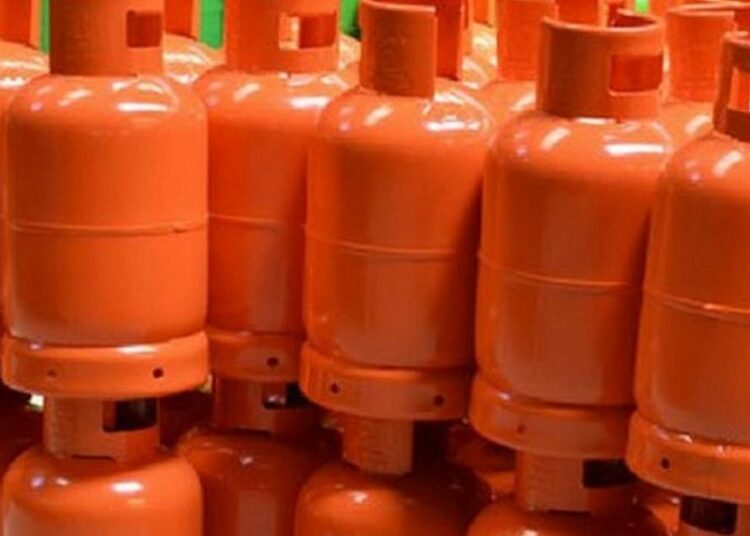Nigeria’s liquefied petroleum gas (LPG) market is witnessing a price relief as the average retail cost of cooking gas has fallen to around N1,400 per kilogram across major cities, according to retailers and industry sources.
After months of steep increases that pushed prices above N1,800/kg in some areas, the decline has temporarily relieved millions of households struggling with high living costs and volatile energy prices.
Retailers in Lagos, Abuja, and Port Harcourt confirmed that the latest price movement began in early October and has since spread nationwide, driven by a combination of improved supply from local terminals, a slight appreciation of the naira, and lower international LPG prices.
According to the Nigerian Association of Liquefied Petroleum Gas Marketers (NALPGAM), the recent drop reflects a better balance between demand and supply in the domestic market.
“We’ve seen more vessels discharging locally sourced gas, which has reduced the pressure on importers,” said Tunde Adelakun, member of NALPGAM, in a telephone interview. “Retail prices are now averaging between N1,350 and N1,450 per kilogram, depending on location and transportation cost.”
For many consumers, the decline marks a welcome reprieve in a country where energy costs have surged across all fronts, from electricity tariffs to petrol and diesel prices—since the removal of fuel subsidies and the naira’s depreciation last year. LPG, widely seen as a cleaner and more efficient cooking alternative to firewood, kerosene, and charcoal, had become increasingly unaffordable for low- and middle-income households.
Data from the National Bureau of Statistics (NBS) showed that the average cost of refilling a 12.5-kilogram cylinder rose from N9,000 in October 2023 to about N16,000 in August 2025, representing a 78 per cent increase in less than two years. Analysts say the recent price decline could help reverse that trend if it is sustained through the final quarter of the year.
Industry operators attribute the easing prices largely to improved local production and distribution by key players such as Nigeria LNG Limited (NLNG), which supplies more than 40 per cent of the country’s domestic LPG needs. “NLNG’s increased domestic allocation and prompt vessel turnaround have stabilised supply,” said a Lagos-based depot operator, who asked not to be named. “Importers are also bringing in more volumes because international prices have softened slightly in recent weeks.”
International LPG prices, often benchmarked against Mont Belvieu in the United States, fell by about 10 per cent in September amid weaker global demand and higher output from major producers. The effect trickled down to Nigeria’s importers, whose landing costs are heavily influenced by foreign exchange rates and freight charges.
Another factor helping local prices is the gradual strengthening of the naira, which has traded below N1,400/$1 in the parallel market in recent weeks, compared to nearly ₦1,600 in mid-September. “Every N50 movement in the exchange rate affects the landing cost of gas,” explained a Nigerian Association of LPG Plant Owners member. “If the naira continues to strengthen, we could see prices drop further in the coming weeks.”
However, industry players caution that the current reprieve may be short-lived unless the government and operators address persistent structural challenges in the LPG value chain. These include inadequate storage and bottling facilities, poor inland transportation infrastructure, multiple taxation, and the limited availability of forex for importers.
The price of cooking gas has historically been volatile in Nigeria, fluctuating with global market conditions and local logistics bottlenecks. Despite being Africa’s largest gas producer, the country still imports a significant share of its LPG consumption—estimated at more than 60 per cent—due to inadequate processing and storage capacity.
The federal government has repeatedly pledged to expand domestic gas utilisation under its “Decade of Gas” initiative, aimed at reducing dependence on biomass fuels and cutting carbon emissions. Yet progress has been slow, and high prices have discouraged adoption, especially among rural households.
Energy economist, Dr. Francis Agwu, described the recent price dip as “a reflection of market correction rather than a fundamental shift.” He warned that “without consistent investment in local production and distribution infrastructure, Nigeria will continue to experience price shocks each time international supply tightens or the naira weakens.”
Retailers also expressed concerns that seasonal demand during the December festive period could push prices up again. “Once demand spikes, especially in urban areas, depot prices usually rise,” said a retailer in Abuja’s Kubwa area. “We are happy that prices are down for now, but we don’t know how long it will last.”
Still, the current trend offers a brief respite for households already stretched by inflation, which stood at 28.5% in September according to the NBS. For families spending up to a tenth of their income on cooking fuel, even a N400 reduction per kilogram could translate into meaningful savings.
As Nigeria’s economy continues to battle high energy costs, the moderation in LPG prices—no matter how temporary—underscores the urgent need for sustainable policies to expand gas infrastructure, deepen domestic supply, and shield consumers from global volatility. For now, though, many households are simply grateful for one less burden in their daily cost of living.





